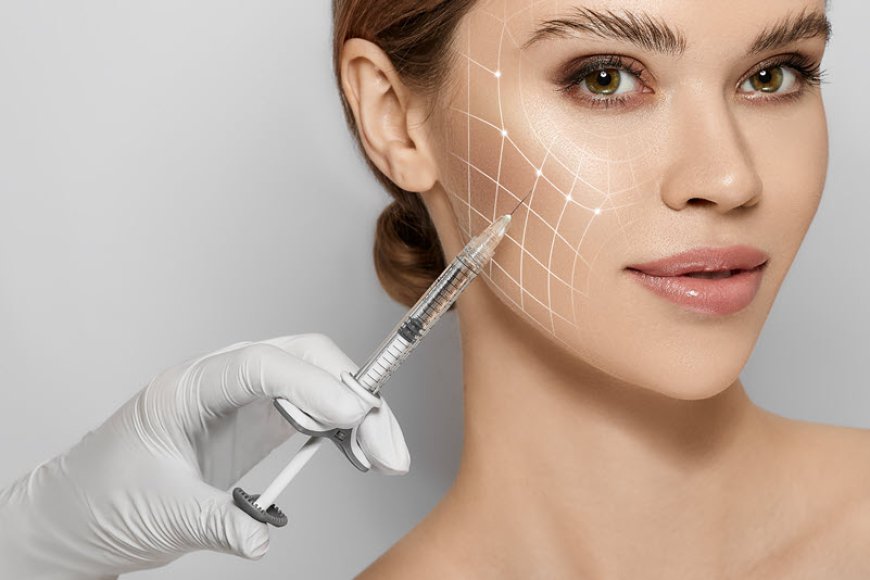Ensuring Safety During Your Body Filler Procedure

In recent years, body fillers have gained immense popularity as a non-surgical option for enhancing facial features and restoring lost volume. These injectable treatments can effectively smooth wrinkles, plump lips, and contour cheeks, making them a sought-after choice for those looking to achieve a youthful appearance. However, with the increasing demand for Body Fillers in Dubai and around the world, it is crucial to prioritize safety during these procedures. Ensuring that you are well-informed about the risks and benefits, as well as the qualifications of the practitioner, can significantly contribute to a safe and satisfying experience.
Understanding Body Fillers
Body fillers, also known as dermal fillers, are gel-like substances injected beneath the skin to restore volume, enhance contours, and smooth out wrinkles. The most commonly used materials for these fillers include hyaluronic acid, calcium hydroxylapatite, and poly-L-lactic acid. Each type of filler has unique properties and is chosen based on the specific treatment goals of the patient.
When considering body fillers in Dubai, it is essential to understand the various options available and the outcomes you can expect. Hyaluronic acid fillers, for example, are known for their ability to retain moisture, making them ideal for areas such as the lips and under the eyes. Other fillers, like calcium hydroxylapatite, provide more structural support and are often used for deeper lines and volume restoration in the cheeks.
Choosing a Qualified Practitioner
One of the most critical factors in ensuring the safety of your body filler procedure is selecting a qualified and experienced practitioner. It is essential to choose someone who is licensed and has specialized training in aesthetics and injectables. Here are a few tips to help you find the right professional:
-
Research Credentials: Look for practitioners who are board-certified in dermatology or plastic surgery. They should have extensive experience administering body fillers and a solid understanding of facial anatomy.
-
Read Reviews and Testimonials: Patient reviews can provide valuable insight into the practitioner's skills and patient satisfaction. Look for testimonials on their website and independent review platforms.
-
Schedule a Consultation: A thorough consultation allows you to ask questions and discuss your goals. Pay attention to how the practitioner addresses your concerns and whether they take the time to explain the procedure in detail.
-
View Before-and-After Photos: A reputable practitioner should have a portfolio of before-and-after photos showcasing their work. This can help you assess their aesthetic style and the results you can expect.
Assessing Your Health and Expectations
Before undergoing any body filler procedure, it is vital to assess your overall health and have realistic expectations. During your consultation, the practitioner will likely ask about your medical history, allergies, and any medications you are currently taking. It is crucial to be honest and thorough in your responses, as this information can impact your safety and the outcome of the procedure.
Understanding what body fillers can achieve is equally important. While fillers can enhance your appearance, they are not a substitute for surgical procedures like facelifts. Discussing your goals with your practitioner can help align your expectations with what is realistically achievable through fillers.
Understanding the Procedure
The body filler procedure typically takes about 30 minutes to an hour, depending on the areas being treated. It involves the following steps:
-
Preparation: The practitioner will clean the area to be treated and may apply a topical anesthetic to minimize discomfort during the injections.
-
Injection: Using a fine needle or cannula, the practitioner will inject the filler into specific areas of the skin. They may massage the area to ensure even distribution.
-
Post-Treatment Care: After the procedure, you may experience minor swelling, redness, or bruising at the injection sites. These effects are usually temporary and should subside within a few days.
Recognizing Potential Risks
While body fillers are generally considered safe, it is essential to be aware of potential risks and complications. Some common side effects include:
- Swelling and Bruising: These are normal reactions and typically resolve within a few days.
- Allergic Reactions: Although rare, some individuals may experience allergic reactions to the filler material.
- Infection: There is a slight risk of infection at the injection sites.
- Lumps or Irregularities: In some cases, fillers may create uneven textures or lumps beneath the skin.
To minimize these risks, follow your practitioner’s post-treatment care instructions and attend any follow-up appointments they recommend.
Aftercare and Recovery
Post-treatment care is essential for ensuring a smooth recovery and optimal results. Here are some aftercare tips to consider:
- Avoid Touching the Treated Area: Refrain from touching, rubbing, or massaging the injection sites for at least 24 hours to prevent displacement of the filler.
- Stay Hydrated: Drinking plenty of water can help keep your skin hydrated and promote healing.
- Avoid Strenuous Activities: For at least 24-48 hours, avoid intense exercise, hot showers, and saunas to minimize swelling and bruising.
- Use Cold Compresses: If swelling occurs, applying a cold compress can help reduce it.
Conclusion
Ensuring safety during your body filler procedure is paramount to achieving the best results while minimizing risks. By choosing a qualified practitioner, understanding the procedure, and following post-treatment care instructions, you can enhance your appearance confidently and safely. As the popularity of body fillers continues to grow in Dubai, staying informed and prioritizing safety will lead to a more satisfying experience and a beautiful outcome.
